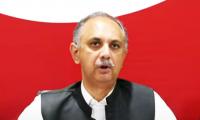Turning our attention away from the tariff differential subsidy (TDS), we look at other distortions caused by pushing public-sector entities to a regulator without divesting them from government ownership. The two crucial areas where this issue emerged are: the losses of the public-sector utilities as well as shortfall in their collections, and how the regulator treated them.
In the old setup, Wapda would aggregate all costs into a basket, including the losses in the system and the shortfall in collections. The regulator said: not anymore. While determining the revenue requirements of the DISCOs, it is the regulator, Nepra, that would decide what is an acceptable level of losses and the shortfall in revenues. Irrespective of actuals, the tariff would be determined at the level of such losses as acceptable to the authority. It is unconcerned, while setting those levels, whether the bottom line of the DISCOs is in the red.
To appreciate what this means, assume that actual system losses of the combined DISCOs are 18 percent of total units produced, but the authority says that this is not an acceptable level it would rather only allow 15 percent. This means that 3 percent of the losses incurred are not allowed to be collected from the consumers. When producing 100 Tera Wh of electricity, 1 percent loss means 1 Tera Wh. Suppose the average tariff is Rs11 KWh. There are 1 billion kWh in 1 Tera Wh, which means a Rs11 billion loss for every percent of loss denied by the regulator. With 3 percent, this becomes Rs33 billion.
A similar argument shows that against actual collection of 76 percent, the regulator assumes collections to be 88 percent, denying about 12 percent of uncollected claims. This 12 percent translates into a shortfall in revenues of roughly Rs132 billion. The total impact of the two losses is Rs176 billion.
The system also faces another risk. DISCOs are supposed to pay sales tax on billing and not on actual collection. Therefore, on 12 percent uncollected revenues, sales tax is paid out of pocket. This adds another financial burden of Rs31 billion, taking the cash-shortfall to Rs207 billion.
Notice this is a cost that has been incurred, maybe in the shape of accounts-payables, in which case there could be financing issues, which is the essence of the circular debt (CD) that plagues the system. Irrespective of whether the system losses and shortfall in collections have any justification, if this uncovered cost is not incurred, the system would collapse.
Thus we are faced with the question: who should bear this cost? Without saying as much, the authority’s implicit response has been (even though one of the chairmen had once said so explicitly) that the government should pay from its budget. We would say: it would be unfair to ask the budget to bear this cost. Should the budget pay if someone is not paying their bills? Should the budget make up the losses of the system? What kind of perverse incentives for other public-sector entities would be ensued if this proposition is accepted? More importantly, if the government were to pay an additional subsidy to make up the two shortfalls, it would be giving it indiscriminately to all types of consumers, for we cannot exclude those consumers who may have defaulted or to the regions where losses were incurred.
This brings us back to the message we gave in Part-IV of this series – that all these costs must be built in tariff, as was done under the old system, until such time that these entities are transferred to the private sector.
In 2013, when the first ever consolidation of CD was undertaken, the government invested fresh capital in DISCOs, enabling them to pay-off the above liabilities. Clearly, that was done after the system was at near collapse and IPPs had issued notices calling sovereign guarantees. The justification used at the time was that after re-capitalisation, and subsequent divestment to private sector, all these investments would be made good. Alas, such a hope has remained unfulfilled.
In the meanwhile, the regulator has curiously allowed a surcharge in the tariff to service the interest on the debts contracted by a power holding company (PHP) to pay off the above liabilities. With this surcharge, a novel cost is added to the tariff facing the industrial and other consumers, cross-subsidising consumers who are already over-burdened by paying a tariff significantly higher than average.
A divestment plan for the public-sector entities was developed to address the concerns of the lenders. Given its centrality in the sustainability of fiscal finances, the IMF also included the power sector as a major focus of its programme. Various elements of the divestment plans were carefully monitored. The privatisation commission appointed financial advisers for a couple of transactions, and solicited expressions of interests as well. But just as the moment of triggering the process of divestment arrived, the concerned minister and secretary got the ears of the prime minister and created doubts on the efficacy of divestment. Around the same time, the secretary general of the Wapda workers union also met with the prime minister and dissuaded him from divestment. When the financial advisers visited the offices of the companies being divested, they were chased out by employees: they saved themselves by running out from the scene.
The divestment plan was radically altered, as it took the shape of small public offerings in the stocks exchange. However, no meaningful progress is made even on this account.
With the divestment plan on the hold, CD is accumulating. It is estimated that at least Rs400 billion is outstanding as CD – besides an equal amount parked in the PHP that needs consolidation. Furthermore, without a road map to change the course of this state, these two quantities will continue to grow, seriously threatening the viability of the power sector along with the fiscal finances of the country.
To be continued
The writer is a former finance secretary. Email: waqarmkn@gmail.com
As usual, any such deal, aiming to resuscitate ailing economy, brings to fore urge and resolve to halt further...
A representational showing sticky notes on a board. — Unsplash/FileThere are some common themes from the lives...
Whether the Daanish Schools effort has been able to live up to its principles or not may be debatable
According to the federal government, last year 653,100 people experienced homelessness on a single night in America
Another advantage for Pakistan is the enhanced teledensity and internet penetration
Both media spheres need to dovetail in amplifying the urgency of addressing climate change at the local, national, and...







